Yoshinogari Historical Park
I got into a doctor of archeology and enjoyed Yoshinogari Historical Park!
“Yoshinogari site” is a typical ruin from the Yayoi period (from B.C. 3rdto A.D 3rdcentury) which is also in the history textbooks. Excavations have been carried out since 1986, and there are about 40ha of the largest ruins in Japan located in the eastern part of Saga Prefecture, in the southern foot of a mountain of Sefuri.
Also, Yoshinogari site is academically important because this site showed that small “villages” incorporated the cultures from East Asia and eventually developed into “countries” with some “villages” through about 700 years of the Yayoi period. This is also designated as a special historic site of the country. Now, 117ha of the Yoshinogari site and its surrounding areas are maintained as “Yoshinogari Historical Park”.
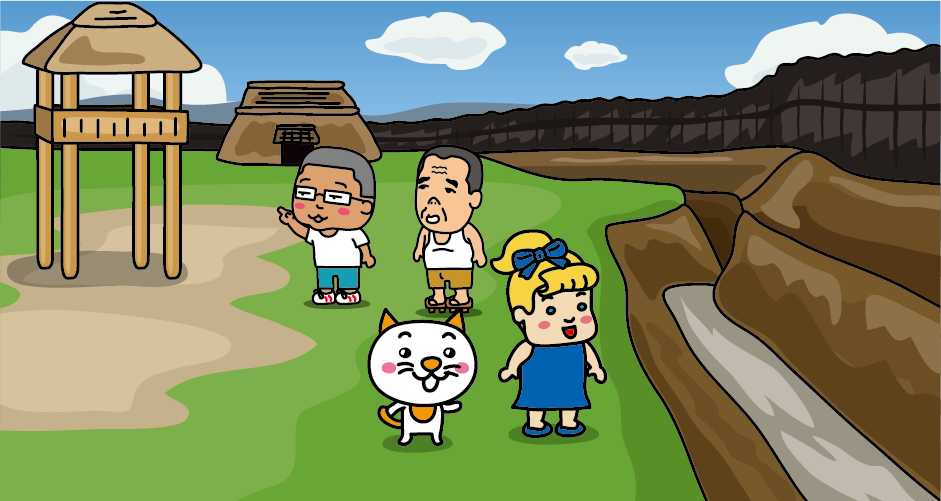
The Yoshinogari site is a large-scale moated settlement. A moated settlement is a village surrounded by fences with moats around to prevent invasion from enemies. During the Yayoi period, rice farming was carried from East Asia and villages started to fight over lands and waters. As a result, people started to create a moated settlement to prevent their villages. The total length of the moat around Yoshinogari site is over 2.5km and the moat and fences have been restored.
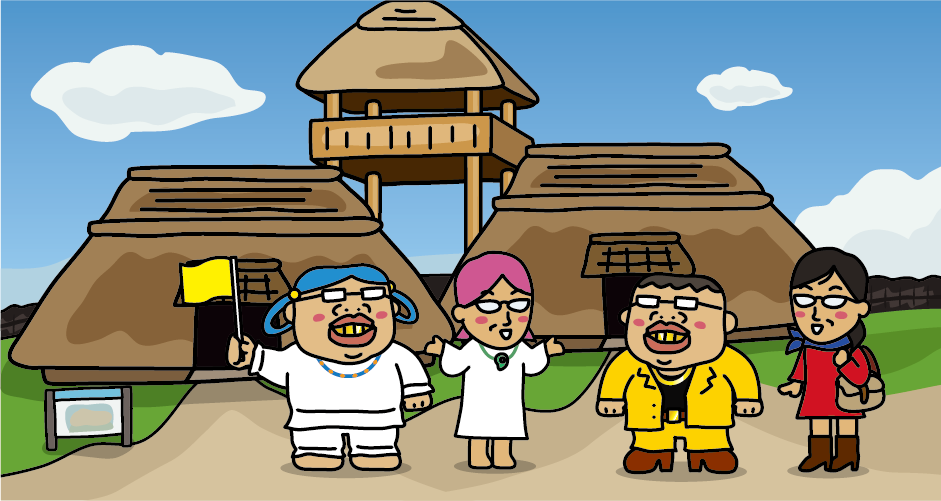
It is maintained as “Yoshinogari Historical Park” and 98 buildings from Yaoyi period such as a watchtower, pit dwelling houses, raised-floor houses, and warehouses have been reconstructed.
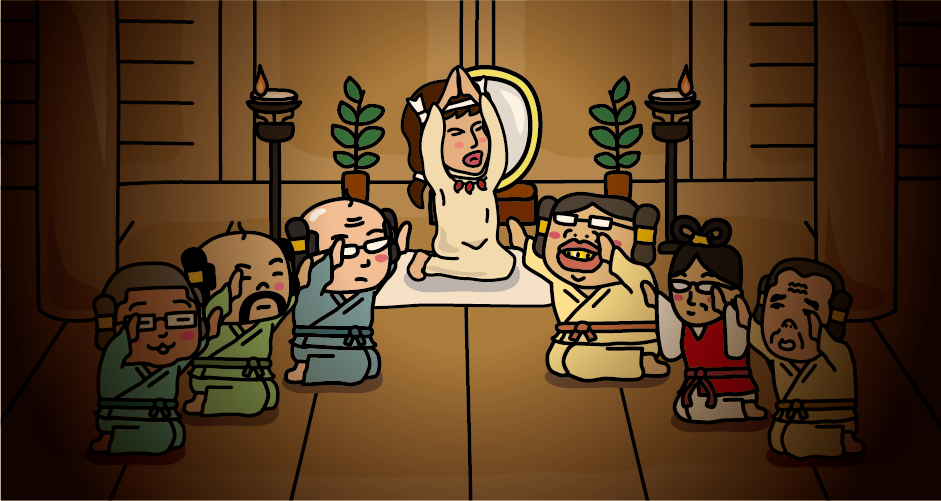
According to the ancient Chinese history book “The History of the Three Kingdoms” (Gishiwajinden), Japan in the Yayoi period was called “Wa” and there was “Yamatai Kingdom” and it was followed by more than 30 small countries. The queen of the country, “Himiko” ruled the country with her spiritual power and fortune-telling. There are two theories about the location of the Yamatai Kingdom which are Northern Kyusyu and Kinai. However, if the Northern Kyusyu theory is adopted, it is said the Yoshinogari site is considered to the Yamatai Kingdom. The large-scale ruin of the altar has been found in the Yoshinogari site.
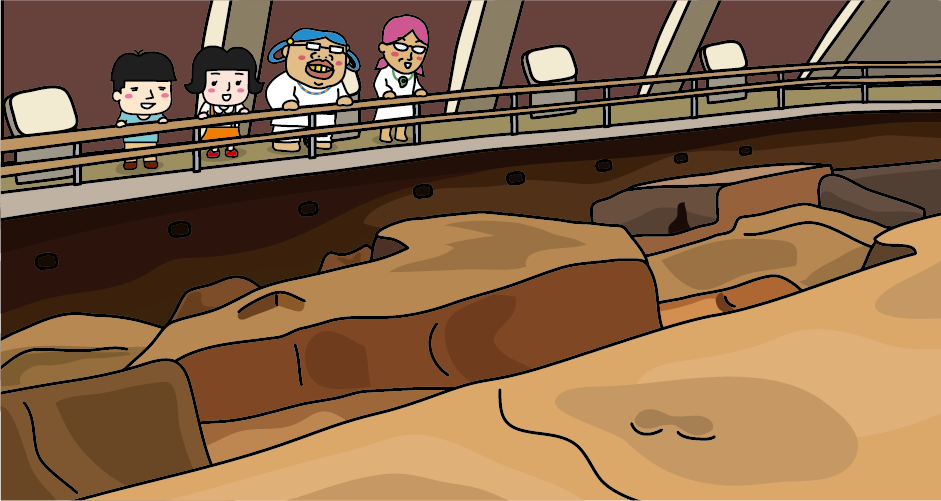
Since North Burial Ground was filled with variable grave goods such as bronze swords and glass cylindrical beads, it is considered the grave of a king ruled Yoshinogari. Inside of the North Burial Ground is an exhibition hall where you can see the excavated tombs and funerary urn.
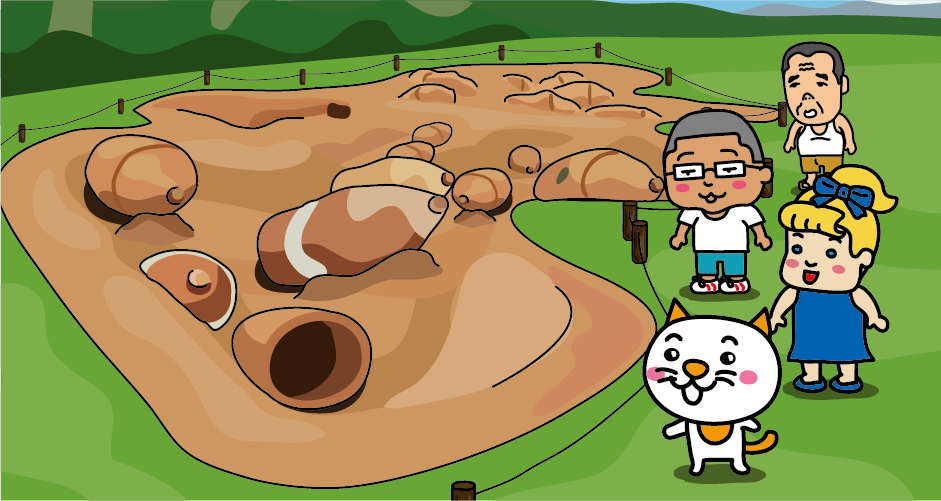
In the Jomon period, when someone died, people dug a hole on the ground and buried the body directly, but in the Yayoi period, people buried the body in the funerary urn, etc.
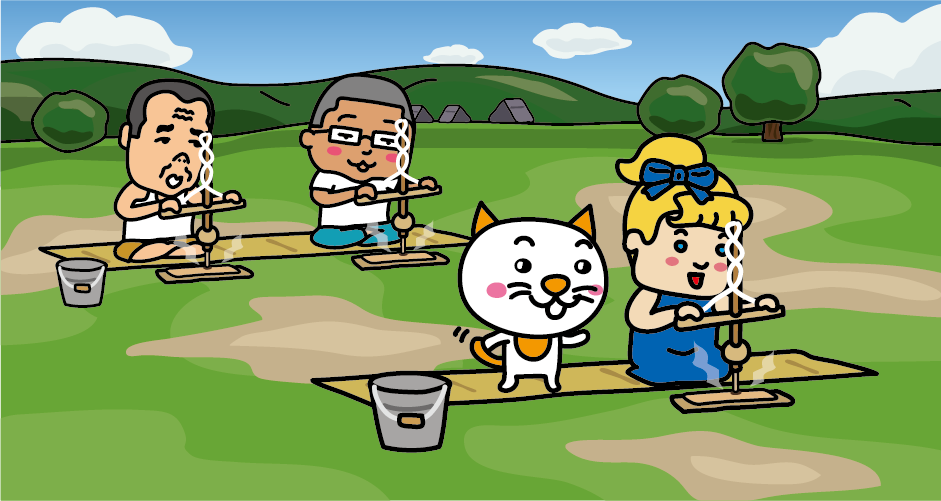
There are many programs in which you can experience life in the Yayoi period, such as making Magatama (comma-shaped beads), making clay flute and building a fire.
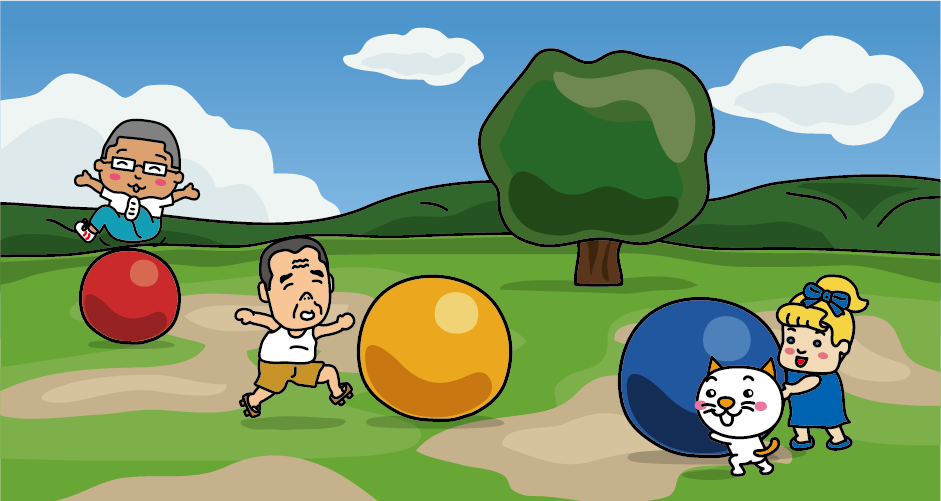
Yoshinogari Historical Park is not only about ruins, but also there are lots of huge playground equipment such as an observation deck, roller slider, and athletics. This is a fun place for both kids and adults and there are also other areas where you can enjoy playing sports and having barbecue parties.
Access to Yoshinogari Park
It takes about 1 hour and 50 minutes from Haneda Airport to Fukuoka Airport. It takes 1 hour and 20 minutes from Itami Airport to Fukuoka Airport.
It takes about 5 minutes from Fukuoka Airport to JR Hakata Station by Fukuoka City Subway Airport Line.
It takes about 15 minutes from JR Hakata Station to JR Shin-Tosu Station by Kyushu Shinkansen. Transfer to the JR Nagasaki Main Line at JR Shin-Tosu Station to JR Yoshinogari-koen Station in about 10 minutes or JR Kanzaki Station in about 15 minutes. About 15 minute-walk from Yoshinogari-koen Station to the park east exit (main gate). About 15 minute-walk from Kanzaki Station to the west exit of the park.

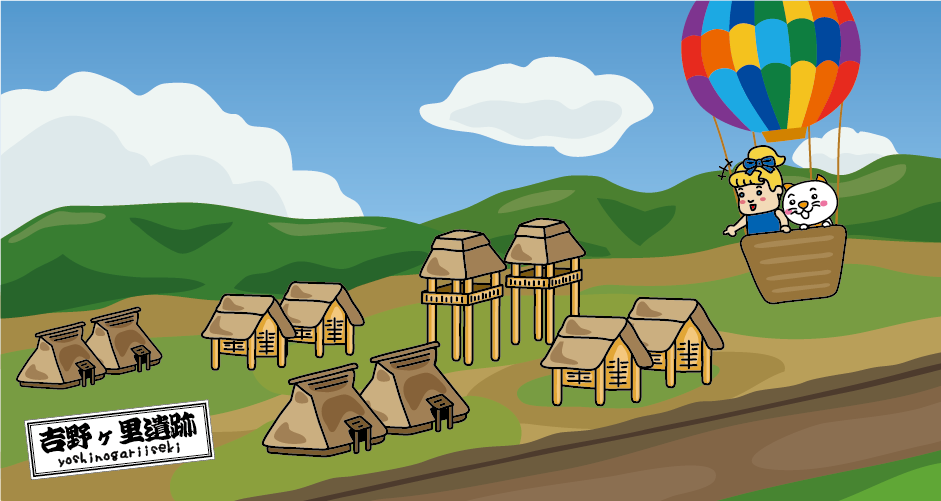


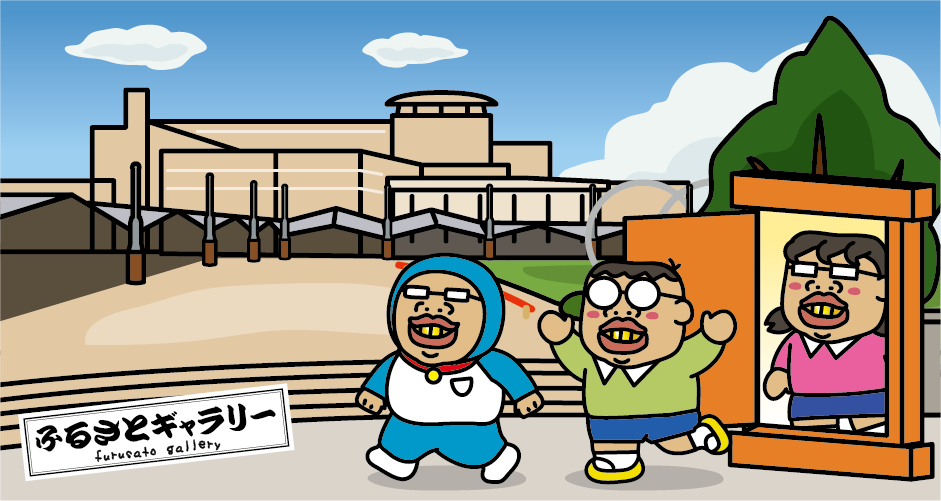
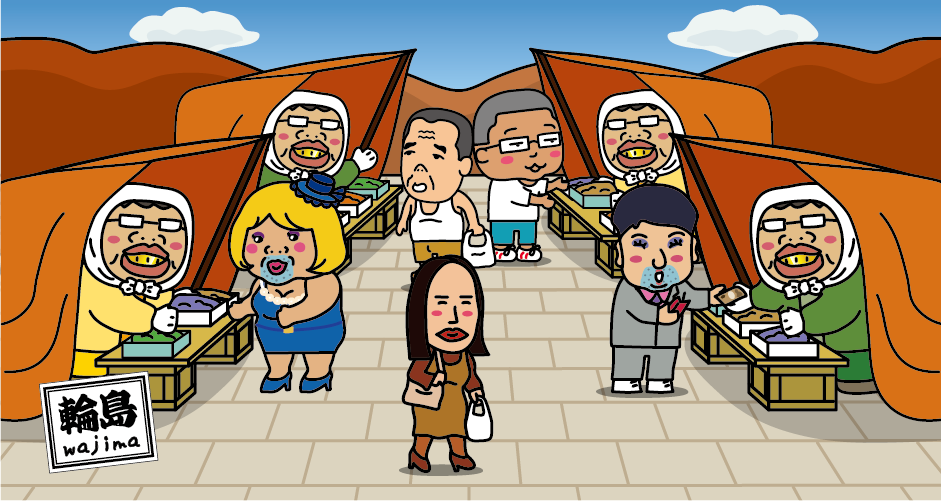

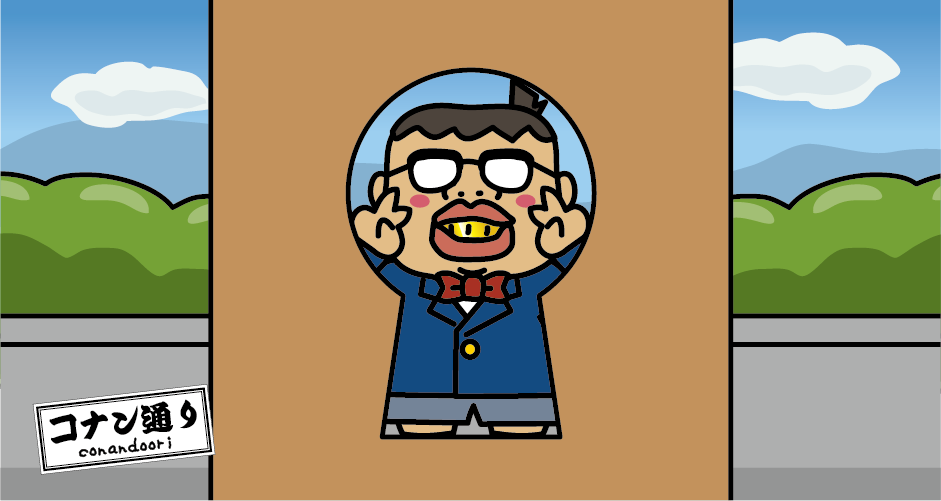
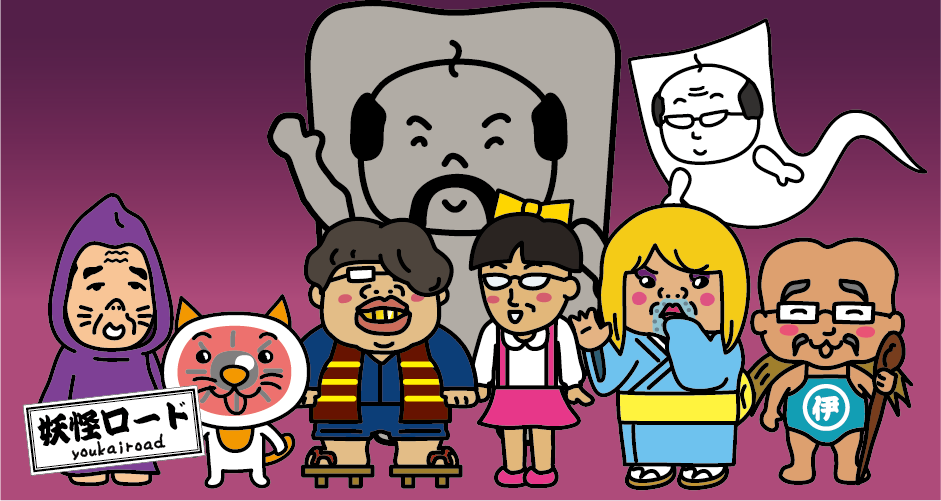

You need to login to comment on an article.